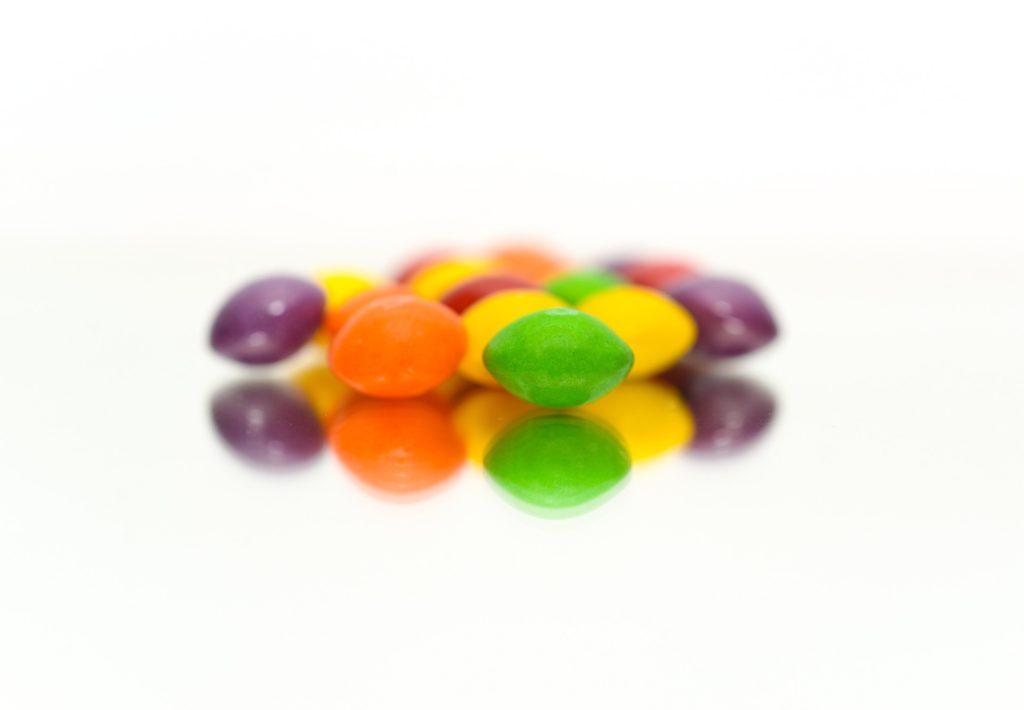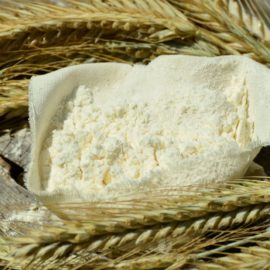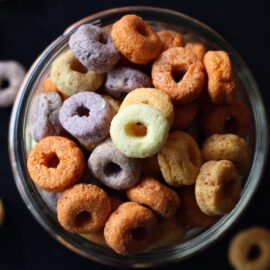
In the United States, food manufacturers use food additives provided that they are allowed. However, some of these are controversial because they are believed to be harmful to the human health. Furthermore, they are banned in certain countries, particularly those in the European Union, but still allowed in the US. This is the case for titanium dioxide, a food coloring found in Skittles in other similar food products.
Titanium dioxide (E171) is an odorless, white, insoluble substance made up of titanium and oxygen atoms. Its chemical structure is ideal for refracting light. And its particle size allows it to diffuse evenly throughout a formulation. To help with dispersion in foods, it frequently contains silicon dioxide and/or aluminum oxide. These diluents can make up no more than 2% of the total.
Titanium dioxide is a naturally-occurring mineral found in plants, animals and some rocks, soils and clays. In food, it acts as a whitener for certain products, and is used to improve the appearance of baked goods, confectioneries and other edible items.
But is titanium dioxide safe?
TITANIUM DIOXIDE IN EUROPE
British mineralogist William Gregor discovered titanium dioxide in 1791. Its ability to whiten substances made it a popular coloring agent in cosmetics, pharmaceutical, in food. But in 2021, the European Food Safety Authority (EFSA) updated its safety assessment of titanium dioxide. According to the assessment, at most, titanium dioxide may contain 50% of the particles in the nano range to which consumers may be exposed. Titanium dioxide particles are poorly absorbed after oral consumption, although they can build up in the body. The panel concluded that titanium dioxide can no longer be considered as a safe ingredient in food.
You might also like: What Is Potassium Bromate (E924) And Why Many Countries Have Banned It In Baked Products?
The evaluation was based on the countless studies pertaining to the scientific evidence and information on nanoparticles. For example, this 3-month study revealed health effects in animals such as weight loss, induced intestinal inflammation, and colorectal cancer. But these studies failed to point out an immediate health concern to the human body. However, it could possibly result in adverse health effects. For these reasons, the EFSA could not rule out the concerns on genotoxicity (the capacity of substances to alter DNA and other forms of genetic material). The United Kingdom did not agree with EFSA on this. The UK’s Committee of Toxicology said that the evidence was weak, and that it might create unnecessary concern to the consumers.
Nonetheless, the European Commission had ordered a full ban on titanium dioxide, which has been in effect since August of 2022.
WHY DOES SKITTLES CONTAIN TITANIUM DIOXIDE?
In the US, titanium dioxide is still a permitted in foods such as Skittles. Skittles contain titanium dioxide to give them brighter, eye-catching colors. It also helps to keep the fruit flavors from running together, and helps preserve the smooth texture of the candy. While it functions without improving flavor to food products, titanium dioxide does provide a glossy shine. However, due to potential health risks caused by ingesting large amounts of it, health organizations are warning people against consuming it in large quantities.
But the US Food and Drug Administration (FDA) still allows titanium dioxide in permissible limit. One of the reasons for this is that the EFSA finding on its toxicity was not conclusive. More data are necessary to ascertain how long-term exposure might impact human health.
If added in food, titanium dioxide should not exceed 1 percent by weight of the food. The FDA last evaluated its safety in 1966. The FDA should continue to keep an eye on new findings and adjust restrictions as needed if compelling proof of health hazards materializes.
The 2022 Skittles lawsuit
Titanium dioxide came under fire in 2022 when a lawsuit was filed against Mars, Skittles maker, in California. The lawsuit claimed that titanium dioxide is a known toxin and unfit for human consumption. Furthermore, it also noted that similar products such as Sour Patch Kids, Swedish Fish Soft & Chewy Candy, and Black Forest Gummy Bears are able to maintain their appearance without the controversial food color. In Europe, titanium dioxide-free Skittles has become available to comply with the ban on the food color.
You might also like: Why Cyclamate Is Banned In The United States
Interestingly, Mars has other products that are titanium dioxide-free. In 2016, Mars committed to remove the potential toxin in their products. The same year, the company released a statement saying that they plan to remove the artificial flavors in their products in the next 5 years.
5 years after that, the Environmental Working Group (EWG) reported that Skittles, Starbursts, and other thousands of candies still contain titanium dioxide. Well, if truth be told, the number of food products that use titanium dioxide is difficult to estimate because federal regulations do not mandate all manufacturers to disclose the component’s use on ingredient labels.
ARE THERE ALTERNATIVES?
It is possible to manufacture skittles and other similar products without the need for titanium dioxide. As earlier mentioned, such products without the food color are already available in Europe. This has been made possible through the use of alternative food colors.
One alternative to titanium dioxide is food grade calcium carbonate. Calcium carbonate is a fine, white powder that can be made either naturally by grinding limestone or artificially by precipitating carbon dioxide, water, and heat. In an aquatic environment, calcium carbonate dissociates into calcium and carbonate ions and is only marginally soluble in water.
It works well as an opacity ingredient in sauces and soups and for white coatings on confections. However, it is not as effective as titanium dioxide in whitening. Its chemical composition makes it less effective at reflecting light, and its particle size is substantially bigger than that of titanium dioxide.
Perhaps the most consumer-friendly white food color are starch-based like rice or corn. They achieve the near-similar whitening effect as that produced by titanium dioxide. They are also inexpensive. However, their addition to food may also result in undesirable changes because of their properties. They retain more moisture and thickens. Hence, they are not ideal, especially if they are needed in large amount.


